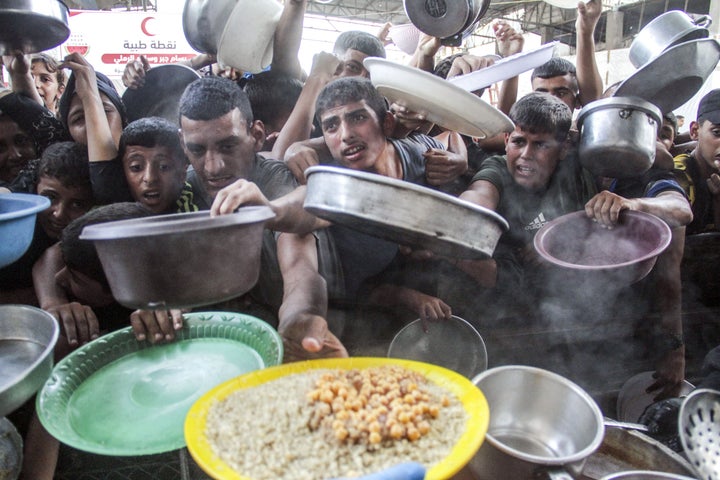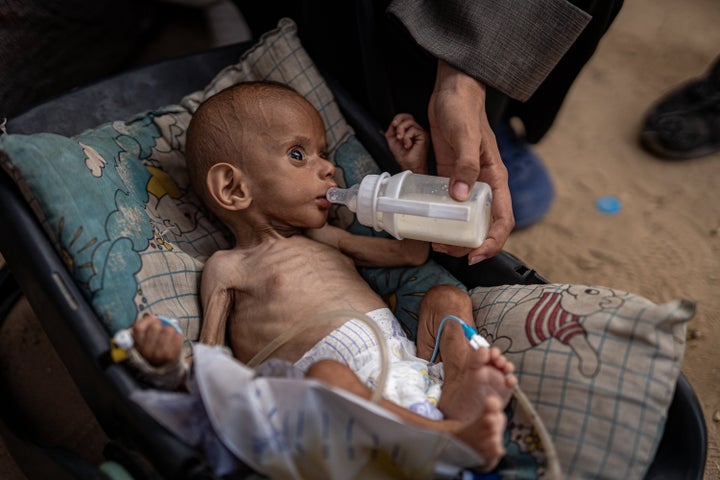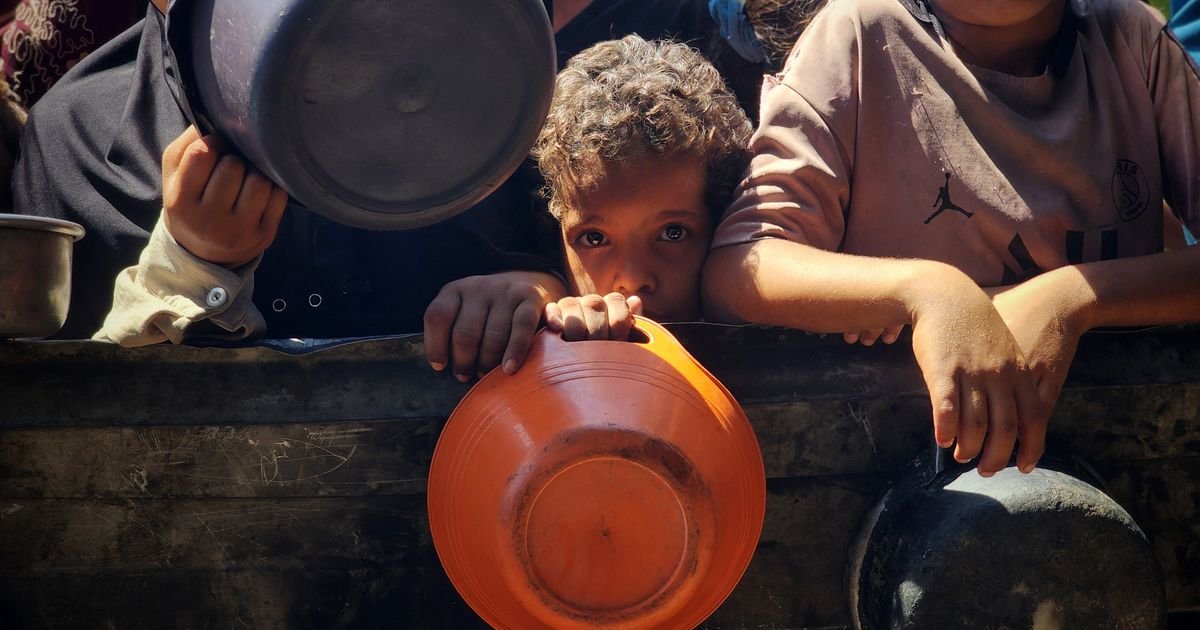Israel is blocking more than 80% of food deliveries from entering a starving Gaza, according to data compiled by more than a dozen humanitarian groups warning of the dire consequences of the military’s almost year-long siege on the Palestinian territory.
Alongside Israel’s nonstop bombing that has flattened entire neighborhoods and shredded Palestinian bodies, the ongoing obstruction of aid – food, water, medicine, hospital supplies, fuel – is contributing to Gaza’s worsening humanitarian disaster, with the enclave’s entire population of 2.2 million people facing hunger and disease.
“The situation was intolerable long before last October’s escalation and is beyond catastrophic now,” Jolien Veldwijk, Gaza and West Bank director for aid group CARE International, said on Monday. Israel’s military offensive following the Oct. 7 attack by Hamas militants that killed about 1,200 people has so far killed more than 41,000 people in Gaza, according to health officials.
“Over 11 months, we have reached shocking levels of conflict, displacement, disease and hunger,” Veldwijk continued. “Yet, aid is still not getting in, and humanitarian workers are risking their lives to do their jobs while attacks and violations of international law intensify.”

Mahmoud Issa/Anadolu via Getty Images
CARE is one of 15 aid organizations working in Gaza that gathered and analyzed data on the consequences of Israel’s aid blockade, providing its methodology here.
In August, Gaza received a record-low average of just 69 aid trucks per day, while half the Palestinian population in south and central Gaza didn’t receive any food rations. By comparison, the enclave received 500 aid trucks per working day in August 2023, a number aid groups say was still inadequate.
“In northern Gaza, there is an absence of fresh vegetables, fruits, poultry or meat. And for us as humanitarian workers, it’s impossible to deliver aid at scale because we are facing many challenges,” Mahmoud Alsaqqa, a Gaza aid worker with Oxfam International, said in a Monday video. “We have shortages of the cooking gas and the fuel that disrupts the operation of bakeries, community kitchens and the transportation of aid and teams.”
“And also, the situation changes every day. The crossing is open one day, it’s closed the next. And even items are allowed to enter in on one day, it’s not allowed in the day after,” he continued. “Once inside Gaza, the aid workers are facing a deadly obstacle course in order to get goods to their intended destination. They risk their lives every day.”
According to the aid groups’ data, 83% of required food aid does not make it into Gaza, a sharp increase from 34% last year. This translates to Palestinians in the territory going from having access to an average of two meals a day to just one meal every other day, the aid groups say.
An estimated 50,000 Palestinian children ages 6 months to 4 years need urgent treatment for malnutrition – a statistic in line with doctors’ warnings that children are hardest hit by starvation.
“What I can tell you is that even in the south, where extremely limited amounts of humanitarian aid is entering, people are wildly malnourished,” Dr. Tammy Abughnaim, an American emergency physician who recently volunteered in Gaza, told HuffPost last month. “Starving people cannot recover from traumatic injuries. Starving children will have their growth stunted for years. Starving mothers cannot breastfeed their children. All of that is a direct result of Israel’s blockade and siege of the Gaza Strip.”
A spokesperson for the Israeli military directed HuffPost to request comment from Israel’s Coordinator of the Government Activities in the Territories, which oversees the humanitarian efforts in Gaza and the West Bank. COGAT did not immediately respond to HuffPost’s request, though the Israeli government has maintained that there are plenty of aid trucks entering the strip.

Ibrahim Nofal/Anadolu via Getty Images
Earlier this month, a report by the United Nations special rapporteur on the right to food said that Israel is deliberately starving Palestinians in Gaza and the West Bank as a means to exterminate the population and annex the land. The report by Michael Fakhri argues that the “most well-recognized starvation act” is weaponizing humanitarian aid, either by blocking said aid or by leveraging it for political negotiations related to the impacted population.
“By destroying and poisoning agricultural land, decimating ports and fishing vessels, Israel has destroyed approximately 93 per cent of the economy of the agriculture, forestry and fishing sector,” Fakhri wrote in the report, joining the growing number of voices in the international community calling Israel’s actions genocidal.
“Military necessity can in no way justify such destruction, since the intended and achieved result has been a complete halt of the production of agricultural products, forcing the entire population to depend on humanitarian assistance for food,” he continued. “In turn, Israel then used humanitarian aid as a political and military weapon to harm and kill the Palestinian people in Gaza.”
Fakhri will present his report next month before the U.N. General Assembly, which is also meeting this week in New York. The aid groups stressed that member states must demand Israel end all aid obstruction and immediately implement a permanent cease-fire.

